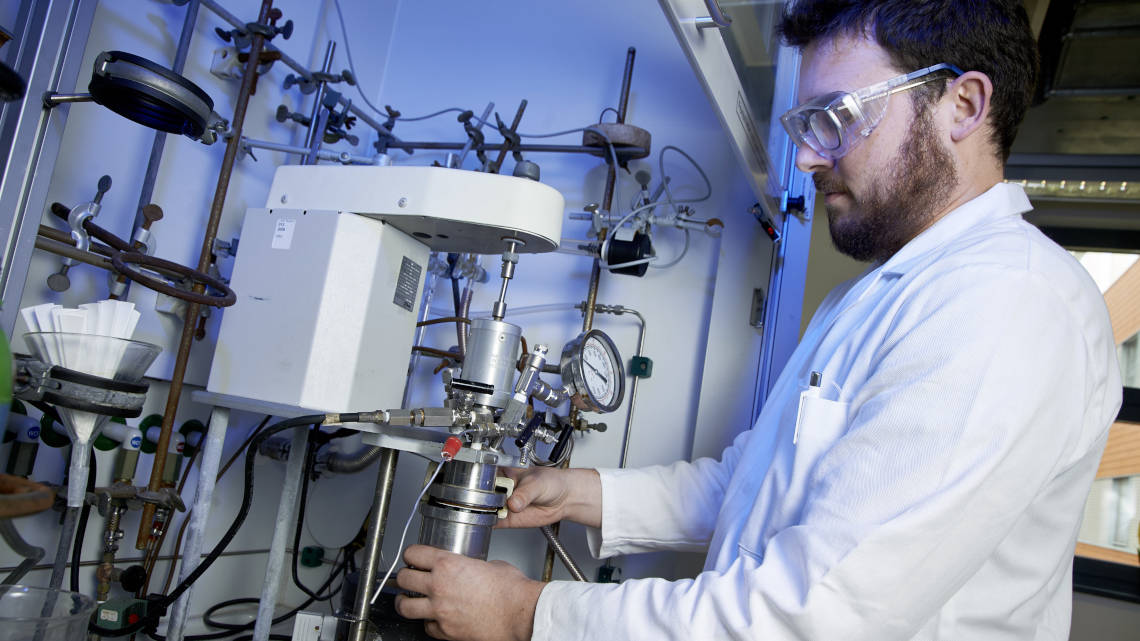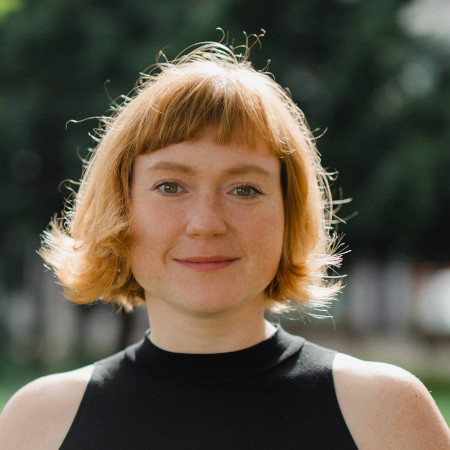Turning carbon dioxide into chemicals
Rostock chemists use the concept of artificial photosynthesis to produce high-quality hydrocarbons from carbon dioxide.

In 2019, the PROPHECY research project gained insights into what happens at the molecular level during artificial photosynthesis, i.e. when sunlight and carbon dioxide are used as the starting materials for a chemical reaction. For instance, methane and hydrogen can be produced in this way. By 2023, the follow-up project PRODIGY is expected to expand the range of possible products by further deepening the understanding of the molecular processes of such reactions. To this end, the participating researchers at the Leibniz Institute for Catalysis (LIKAT) want to test new catalysts and reaction partners together with other German research institutions.
Favorable reaction conditions
Artificial photosynthesis has a number of advantages: Firstly, it uses the greenhouse gas carbon dioxide as a raw material, thus combining climate protection with low raw material prices. On the other hand, the reactions take place at room temperature and normal pressure, which saves tremendous amounts of energy and costs compared to normal process conditions in chemistry. So far, however, the process yield is low - too low for industrial use. This is because researchers have so far had the primary goal of "converting the CO2 as simply and elegantly as possible," explains project coordinator Jennifer Strunk from LIKAT.
To ensure that even low yields can be economically interesting, the researchers now want to produce products of higher quality than methane and hydrogen, for example alcohols, aldehydes, carboxylic acids and acetone. To achieve this, however, the artificial photosynthesis reaction must be supplemented by other reaction partners. These should preferably be obtained from biogas so that the process is still sustainable.
Optimizing catalysts
"We still know too little about the molecular mechanisms of these reactions," said Strunk, pointing out a major challenge. The researchers want to close this gap and systematically test different reaction conditions and different catalysts, especially metal oxides. The knowledge gained will be used to optimize the catalysts so that they can use the broadest possible spectrum of sunlight.
Breakthrough will take time
Project manager Strunk does not expect a breakthrough "before several years". The reason for this is the sophisticated reaction structure: carbon dioxide is very inert. Therefore, it must always be ruled out that another carbon compound, for example from a contamination or the test apparatus, is responsible for the observed product. The Federal Ministry of Education and Research is funding the project with 380,000 euros until 2023.
bl/um


